How to Proof Read
A comprehensive guide on how to proof read a book for publication. Welcome to the labyrinthine world of words, where every character, punctuation, and space counts. Proofreading is an integral part of the publishing process that ensures a book is error-free, cohesive, and reads smoothly. In this article, we’ll take a deep dive into understanding how to proofread a book for publication, with key insights, tools, techniques, and real-world examples to illustrate this complex yet captivating process. Ready to embark on this exciting journey? Let’s dive right in!
Key Takeaways Table
| Key Points | Description |
|---|---|
| Understanding Proof reading | Proofreading is the final stage of the editing process, ensuring the manuscript is error-free and ready for publication. |
| The Proof reading Mindset | This involves developing attention to detail, understanding the author’s voice and style, and respecting the writing. |
| Pre-Proofreading Steps | This involves familiarizing yourself with the manuscript, communicating with the author, and creating a proofreading strategy. |
| Technical Aspects of Proofreading | This involves checking grammar, syntax, punctuation, consistency in spelling, capitalization, numerals, and formatting. |
| Proofreading Techniques | Techniques include reading aloud, reading backward, using proofreading tools, multiple readings, and peer proofreading. |
| Proofreading for Different Genres | Different genres like fiction, non-fiction, and academic works require different proofreading approaches. |
| Dealing with Proofreading Challenges | This involves strategies to maintain focus, importance of breaks, time management, and handling disagreements on edits. |
| The Business Side of Proofreading | Includes understanding freelance proofreading, working with publishing houses, and being aware of legal and ethical considerations. |
Proof read vs Proofread
Title: Proofread vs. Proof-read: Understanding the Nuance in English Language Usage
The English language is rich in terms and phrases that can often lead to confusion or misunderstanding. Among such pairs, “proofread” and “proof read” appear to be two distinct entities. But are they? Do they both even exist as accepted usages in the English language? Let’s delve into the details.
- Proofread:
“Proofread” is a verb that refers to the act of examining a text carefully to detect and correct typographical errors or mistakes in grammar, style, and spelling. The term originates from the printing industry, where a proof (a preliminary version of a printed sheet) is read and corrected before final printing. Thus, the word “proofread” is used in the context of scrutinizing a written material to ensure it is error-free and communicates effectively.
Here’s an example of how “proofread” is used in a sentence:
“I need to proofread my essay before I submit it to avoid any spelling or grammar mistakes.”
- Proof-read:
The hyphenated “proof-read” is an alternative form of “proofread,” and it is used in the same context. While both are grammatically correct, the use of the hyphen can be more common in British English. However, as language evolves, the use of hyphenated words is becoming less frequent. More often, you’ll see “proofread” used in both American and British English.
Here’s an example of how “proof-read” can be used:
“Could you please proof-read this document for me?”
- Proof read:
“Proof read,” as two separate words, is not a recognized form in English grammar. It’s a common mistake to separate “proof” and “read” when referring to the act of checking a text for errors. When you are referring to the act of checking for errors, it should always be “proofread” or “proof-read,” never “proof read.”
“Proofread” and “proof-read” are both correct forms, and they refer to the same process of reviewing and correcting written text. On the other hand, “proof read” is a grammatical error but is frequently used so it’s considered acceptable. It’s best to use “proofread” or “proof-read” when you’re referring to the act of checking written work for errors.
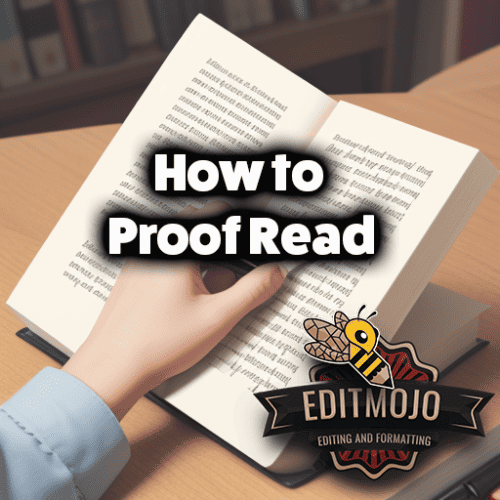
Understanding the Essence of Proof reading
What is Proof reading?
Proofreading is the final stage of the editing process. It involves meticulously examining a manuscript for errors in grammar, spelling, punctuation, and formatting before it’s sent for publication. The goal of proofreading is to improve the readability and ensure that the manuscript is free of errors. This stage is more than just scanning the text for typos; it is an intricate task that requires a keen eye for detail and extensive knowledge of language rules.
The Role and Significance of Proofreading in Publishing
Proofreading plays a critical role in maintaining the quality of a book. An error-ridden book can damage an author’s reputation and hamper the reader’s experience, making proofreading a non-negotiable process in the publishing world.
Proof Reading Vs. Other Forms of Editing
Though proofreading is often confused with copy-editing and developmental editing, they are different stages of the editing process. Developmental editing is a high-level review focusing on the book’s content, structure, and style. Copy-editing, on the other hand, corrects issues with sentence structure, clarity, and tone. Proofreading, however, is the final polish ensuring the manuscript is entirely ready for publication.
The Proofreading Mindset
Developing Attention to Detail
Proofreading isn’t just a task, but a mindset. It requires immense patience and a detail-oriented approach. Every punctuation mark, word choice, and even space can make a significant difference to the text. It’s like being a detective on a mission to spot and correct any inconsistencies or errors that might affect the reading experience.
Understanding the Author’s Voice and Style
A good proofreader respects the author’s voice and style. They aim to enhance the text without modifying the author’s unique tone and narrative style. It’s like polishing a diamond without altering its original shape.
Respecting the Writing
The key to successful proofreading is understanding that it’s not about making the text perfect in the proofreader’s eyes, but enhancing it to provide the best reading experience while retaining the author’s intent and style.
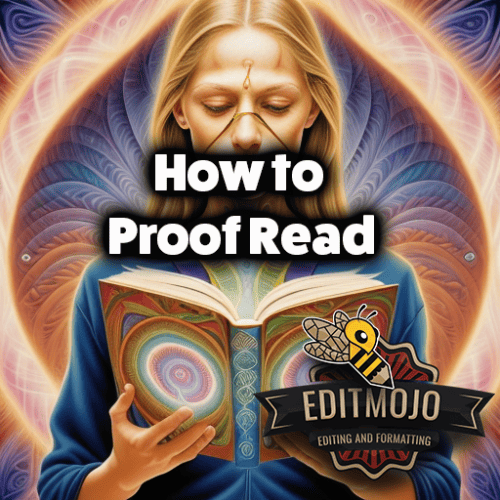
Before You Start: Pre-Proofreading Steps
Familiarize with the Manuscript
Before starting the proofreading process, it’s important to familiarize yourself with the manuscript. This involves understanding the book’s genre, theme, style, and the author’s voice. For instance, a fantasy novel will have a different narrative style and language use compared to a scientific research paper. Understanding this context can make proofreading more effective.
Communicate with the Author
Proofreading is a collaborative process. Therefore, it’s essential to have open communication with the author regarding their style preferences, specific terminology they use, or any other details that can guide your proofreading process.
Create a Proofreading Strategy and Schedule
Having a clear strategy and schedule can make proofreading more manageable. Break down the manuscript into sections and allocate specific times for proofreading each part. This way, you’ll ensure a systematic approach and avoid fatigue, which can compromise the quality of your proofreading.
The Technical Aspects of Proofreading
Proofreading goes beyond just checking for typos. It involves several technical aspects that help enhance the readability and consistency of the manuscript.
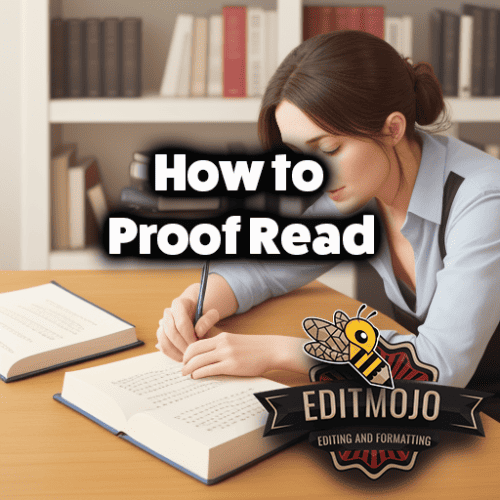
Grammar, Syntax, and Punctuation
Ensuring correct grammar usage, sentence structure (syntax), and appropriate punctuation is the cornerstone of proofreading. Tools like Grammarly and ProWritingAid can be of great assistance in this aspect.
Consistency in Spelling, Capitalization, and Numerals
The manuscript should have consistent spelling (British or American English), capitalization rules, and numeral usage. For instance, if the author uses ‘colour’ in one section and ‘color’ in another, the proofreader needs to ensure consistency.
Formatting and Layout
Proofreaders should also check for proper formatting, such as paragraph indentation, headers, footers, and appropriate use of italics, bolds, and underlines. Moreover, they should ensure the layout of the pages, including margins, spacing, and pagination, is consistent and meets the publisher’s guidelines.
Proofreading Techniques
Here are some proofreading techniques that can make the task more effective and efficient.
Reading Aloud
Reading the manuscript aloud can help you catch awkward phrasing, run-on sentences, or misplaced punctuation. This technique makes it easier to spot errors that you may overlook while reading silently.
Reading Backward
Starting from the last sentence of the manuscript and moving to the beginning can be an effective way to spot typos and spelling errors. This technique breaks the logical flow of the text, making it easier to focus on individual words.
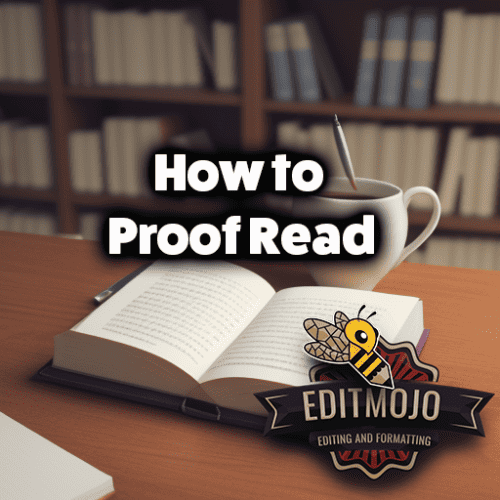
Using Software and Tools
Proofreading tools like Grammarly, Hemingway Editor, and ProWritingAid can be beneficial. However, they should not replace manual proofreading as they may not catch context-specific errors or nuanced language use.
Double or Multiple Readings
Considering the complexity of the proofreading process, going through the manuscript multiple times can be helpful. Each reading can focus on different elements, like grammar in the first, spelling in the second, and formatting in the third.
Peer or Team Proofreading
Having another pair of eyes review the manuscript can catch errors that the original proofreader might have missed. It’s like having a safety net to ensure that the manuscript is as polished as it can be.
Special Focus: Proofreading for Different Genres
Different genres require different proofreading approaches.
Proofreading Fiction
When proofreading fiction, pay attention to narrative flow, dialogue punctuation, and character consistency. For instance, if a character has blue eyes at the beginning of the book, make sure they don’t inexplicably change to green halfway through!
Proofreading Non-fiction
Non-fiction proofreading requires a focus on factual accuracy, logical flow of arguments, consistency in terminology, and appropriate citation formats.
Proofreading Academic Works
Proofreading academic works involves checking the appropriate use of specialized terminology, correctness of citations and references, consistency in format as per specific style guides (APA, MLA, etc.), and maintaining an objective tone.
Common Mistakes to Avoid in Proofreading
Avoiding common pitfalls can help enhance the quality of your proofreading.
Overlooking Commonly Confused Words
Words like ‘compliment’ and ‘complement’ or ‘effect’ and ‘affect’ can be easily confused. Pay special attention to these. Tools like Thesaurus can be helpful in this regard.
Ignoring Small Text Areas
Captions, footnotes, headers, page numbers, and references often get
overlooked during proofreading. Make sure to check these areas meticulously.
Over-relying on Spell-Checking Software
While helpful, spell-checkers can miss homophone errors (like ‘there’ and ‘their’) or context-specific mistakes. Manual proofreading is irreplaceable.
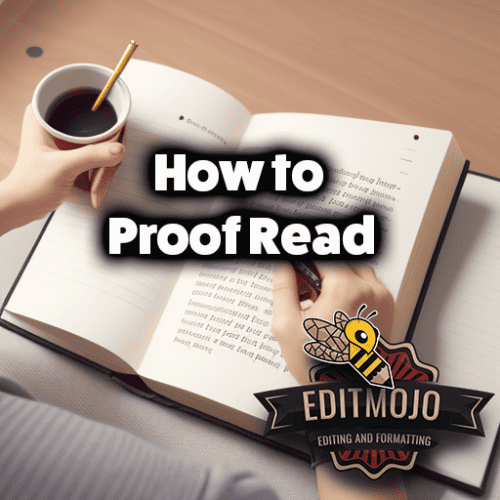
Proofreading and the Larger Editing Process
Proofreading doesn’t exist in isolation. It’s part of a larger editing process and requires effective collaboration with copy-editors and developmental editors. It’s the last line of defense before the book goes to print.
Dealing with Challenges and Burnout in Proofreading
Proofreading can be an exhaustive process. Let’s look at ways to handle challenges and prevent burnout.
Maintaining Focus
Strategies for maintaining focus include taking regular short breaks, practicing mindfulness, and maintaining a clean and organized workspace.
Importance of Breaks and Time Management
Breaks are essential to maintain the quality of proofreading. Use techniques like the Pomodoro Technique, which involves taking a 5-minute break every 25 minutes of work. Proper time management can prevent rush and reduce stress.
Handling Disagreements on Edits
It’s essential to maintain professionalism and respect the author’s viewpoint if there’s a disagreement on certain edits. Open communication and compromise are key.
The Business Side of Proofreading
If you’re considering freelance proofreading or working with publishing houses, it’s important to understand the business side.
Freelance Proofreading
As a freelance proofreader, you’ll have to manage your own business, including marketing your services, negotiating contracts, and managing your taxes. Websites like Upwork or Fiverr can be good starting points to find freelance proofreading jobs.
Working with Publishing Houses
Publishing houses typically have a team of proofreaders. They provide regular work but may have strict deadlines.
Legal and Ethical Considerations
Ensure you’re aware of copyright laws and maintain the confidentiality of the manuscripts you’re working on. It’s also crucial not to plagiarize or reproduce any part of the work without proper permissions.
Additional Resources for Proofreaders
Here are some resources to sharpen your proofreading skills:
Books and Courses
Books like “The Proofreading Guide” and courses on platforms like Coursera can be beneficial.
Communities and Networks
Joining communities like the Editorial Freelancers Association can provide networking opportunities and insights into the industry.
Certifications
Certifications like the Cambridge English’s Certificate in English Language Skills: Proofreading can enhance your credibility as a proofreader.
Proofreading Case Study
Let’s look at a real-life proofreading project to illustrate how the process works in practice.
The Project
“The Final Quest”, a fantasy novel, had been copy-edited and was ready for proofreading. The challenge was the unique fictional language and the complex plot with numerous characters.
The Proofreading Process
The proofreader familiarized themselves with the manuscript and communicated with the author regarding the unique language. They followed a systematic schedule and used proofreading software to assist them. Special attention was given to character consistency and narrative flow.
The Outcome
The proofreading process caught several continuity errors and typos that were overlooked in the copy-editing process. The author was delighted with the polished
manuscript, and the book was published with great reviews, reinforcing the importance of thorough proofreading.
Exceptional Proofreading Services at EditMojo.com
Are you an author, a student, a business professional, or anyone seeking to make your written communication clearer, more effective, and error-free? Look no further than EditMojo.com, the one-stop solution for all your proofreading needs.
EditMojo.com is a premier proofreading service that caters to a wide array of audiences. Whether you’re submitting a critical academic paper, finalizing a business proposal, or putting the finishing touches on your debut novel, precision is paramount, and EditMojo.com is here to help.
What makes EditMojo.com stand out in the crowd of proofreading services? The answer lies in their commitment to detail, their quick turnaround times, and their highly skilled team of proofreaders.
- Exceptional Attention to Detail: At EditMojo.com, every document is treated as a unique piece of writing. Their proofreaders dive deep into your text, catching the smallest of errors that can easily go unnoticed. They will identify and correct grammar mistakes, punctuation errors, typos, and inconsistencies in style and format.
- Quick Turnaround Times: EditMojo.com understands that in today’s fast-paced world, time is of the essence. They are committed to delivering a thoroughly proofread document in record time without compromising on quality. You can rest easy knowing that your deadline will be met.
- Expert Proofreaders: EditMojo.com prides itself on its team of highly skilled proofreaders. These are not just individuals proficient in English but experienced professionals who understand the nuances of language and the intricacies of different writing styles. They will not only proofread your document for errors but also provide suggestions on clarity, tone, and overall flow.
In addition, EditMojo.com offers their proofreading services at competitive prices, making them an affordable choice for individuals and businesses alike. The platform is user-friendly, ensuring an easy and seamless experience right from the upload of your document to receiving the final proofread version.
Conclusion
Proofreading is a critical step in the publishing process that ensures the manuscript is polished and ready for the readers. It requires a keen eye, extensive language knowledge, patience, and a systematic approach. Remember, the goal of proofreading is not just to find errors but to enhance the overall readability while respecting the author’s voice. So the next time you pick up a book, spare a thought for the proofreaders who’ve worked behind the scenes to give you a seamless reading experience.
Interactive Elements
Here’s a fun quiz to test your proofreading knowledge:
- What is the difference between proofreading and copy-editing?
- Name three proofreading techniques.
- What are the common mistakes to avoid in proofreading?
Also, let’s have a poll. What do you find most challenging about proofreading?
Finally, we would love to hear about your experiences and insights about proofreading in the comments section. Happy proofreading!
Top Five Questions and Answers Table
| Questions | Answers |
|---|---|
| What is the difference between proofreading and other forms of editing? | Proofreading is the final stage of editing, focusing on error correction, whereas copy-editing corrects sentence structure, clarity, tone, and developmental editing focuses on the book’s content, structure, and style. |
| How important is the author’s voice and style in proofreading? | The author’s voice and style are crucial in proofreading. A good proofreader enhances the text without modifying the author’s unique tone and narrative style. |
| What are the technical aspects involved in proofreading? | Technical aspects include checking for grammar, syntax, punctuation errors, ensuring consistency in spelling, capitalization, numerals, and formatting, and checking layout. |
| What are some proofreading techniques? | Techniques include reading aloud, reading backward, using proofreading tools, multiple readings, and peer or team proofreading. |
| What are some common mistakes to avoid in proofreading? | Common mistakes include overlooking commonly confused words, ignoring small text areas, and over-relying on spell-checking software. |
Top Seven Resources for Further Reading Table
| Resource | Description |
|---|---|
| Grammarly | A powerful tool to assist with grammar, syntax, and punctuation errors. |
| ProWritingAid | A tool offering detailed suggestions to improve writing quality. |
| The Proofreading Guide | An essential book offering comprehensive insight into proofreading techniques. |
| Cambridge English’s Certificate in English Language Skills: Proofreading | A reputable certification to enhance your credibility as a proofreader. |
| Editorial Freelancers Association | A community providing networking opportunities and industry insights. |
| Coursera | An online learning platform offering proofreading courses. |
| Upwork | A freelance platform to find proofreading jobs and experience. |
Effective book editing involves not only proofreading but also evaluating the structure, pacing, and character development of a story.
